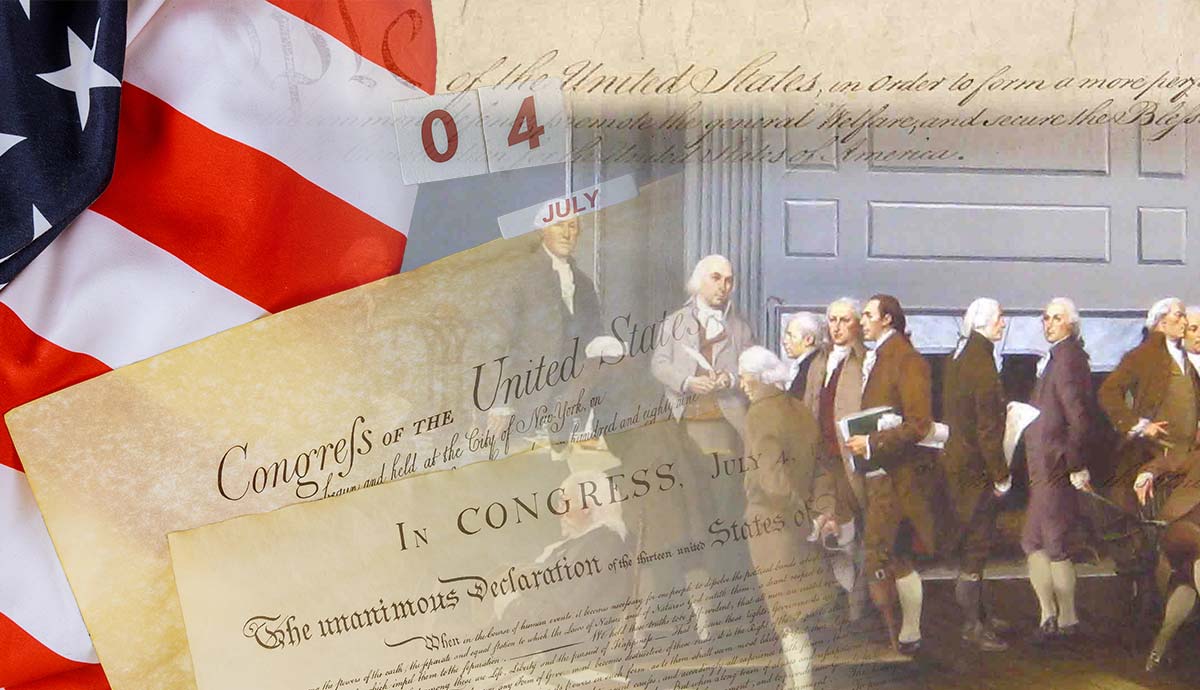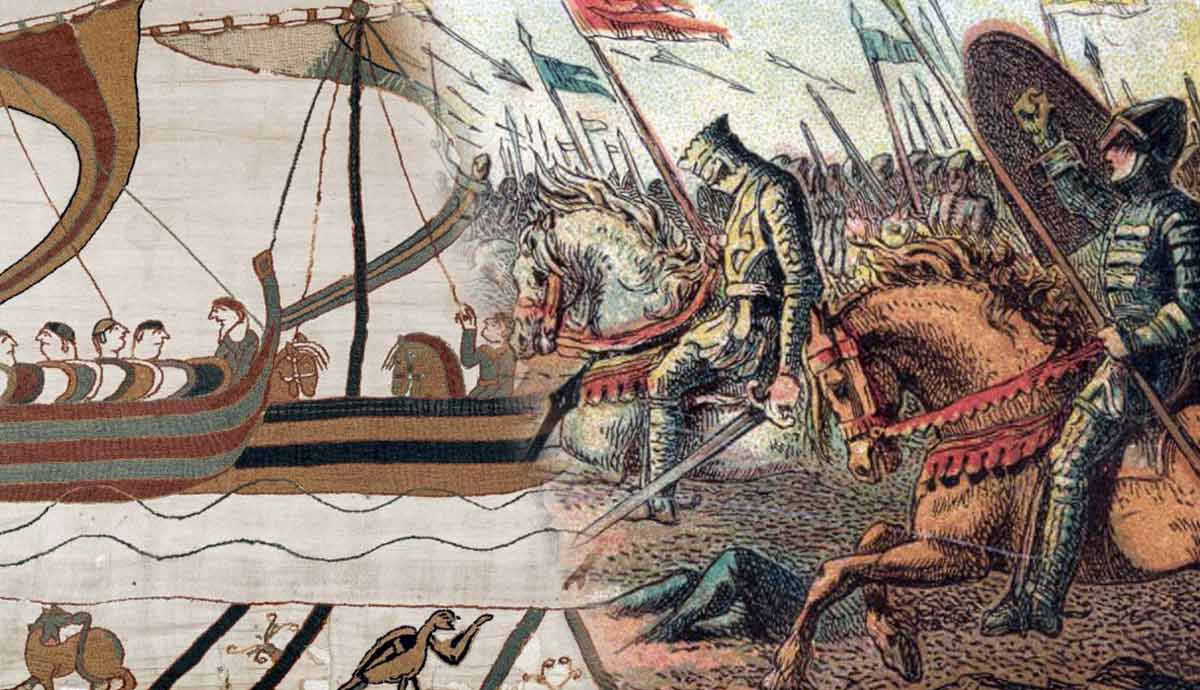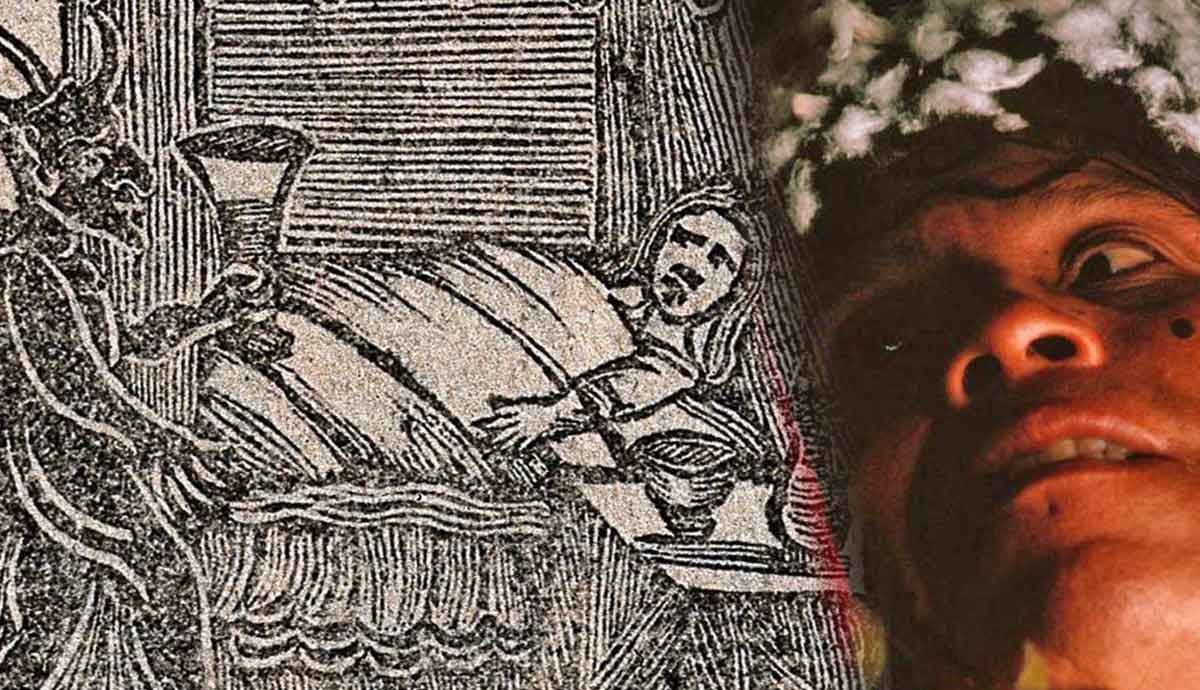
In 1786, the young United States of America was nearly ripped apart by Shays’ Rebellion. Angry farmers suffering from debt and taxes were forming mobs that were using direct democracy—and intimidation—to overthrow local governments and suspend debts. Local militias, composed of men in similar situations, refused to put down the mobs of farmers. After the rebellion was finally put down by a privately funded army, many Americans were eager for a stronger central government that could maintain order and security. Toward this end, states sent delegates to Pennsylvania that upcoming summer. While they started out by simply making revisions to the Articles of Confederation, they quickly realized that more drastic changes were needed.
Setting the Stage: Articles of Confederation

The Thirteen Colonies declared themselves an independent nation, the United States of America, on July 4, 1776. Sixteen months later, during the American Revolutionary War, the Continental Congress adopted its first guiding charter: the Articles of Confederation. It took effect in 1781 after the United States won its independence from Britain after the Siege of Yorktown. Having suffered under oppressive British rule for years, the former colonies wanted little government…and the Articles provided this minimal government.
Under the Articles, the central government had no chief executive and no ability to tax or regulate commerce and trade. As a result, the central government scarcely existed, and almost all of the power rested on state governments. Unfortunately, by the mid-1780s, states were frequently refusing to cooperate with each other on issues of trade. Lack of tax revenue meant the central government could hardly raise an army, putting the fledgling nation at risk of being re-acquired by a European power. The economy was weak, and many Americans were struggling financially.
Setting the Stage: Shays’ Rebellion

Most Americans were farmers. With the national economy weak, many farmers struggled with debt. In Massachusetts, state laws treated debtors harshly and allowed creditors to seize farmers’ property for unpaid debts. This quickly resulted in an angry uprising as struggling farmers protested both debtors’ laws and high taxes. Using strength in numbers, the farmers could swarm local jurisdictions and use popular democracy to overturn debtors’ laws and intimidate local creditors.
The uprisings spread to other states, where farmers faced similar conditions. Although Shays’ Rebellion was eventually put down by a privately raised army, as it attempted to seize an armory, the incident frightened many Americans. Despite sympathy for the debtors, most Americans wanted a stronger central government to maintain order and security. America’s experiment with minimal government was not going well, and demand for change was high.
Conventions to Discuss the Articles

Attempts to amend the Articles of Confederation had been made even before Shays’ Rebellion. In February 1785, a committee chaired by young congressman James Monroe (later the fifth US president) recommended amending the Articles. Individual amendment attempts had all been rejected by most states, and under the Articles any amendment required virtually unanimous agreement. In March 1785, former general George Washington offered the use of his home, Mount Vernon in Virginia, to delegates seeking a comprehensive waterway navigation agreement among states. This Mount Vernon Conference set the stage for future meetings of government reform.
In September 1786, a larger convention was held. Its goal was broader than the Mount Vernon Conference and sought to develop uniform trade standards among states. The Annapolis Convention brought together representatives from five states and furthered the spirit of interstate cooperation. Although the Annapolis Convention did not lead to any new laws, it proved that representatives from multiple states could work together in a civil manner. The host of the Mount Vernon Conference and two prominent attendees of the Annapolis Convention both came together the following year, after the turmoil of Shays’ Rebellion, to guide an even larger gathering of state delegates.
Constitutional Convention of 1787 Begins

Alexander Hamilton and James Madison, who attended the Annapolis Conference, urged a larger gathering of delegates from all thirteen states. While only a dozen men were present at Annapolis, fifty-five men arrived for this new convention in Philadelphia, Pennsylvania. Twelve states sent delegates in May 1787, and these delegates chose national hero George Washington to be the president of the convention. Most had served in the Continental Congress at some point, and most were also highly educated. Benjamin Franklin of Pennsylvania was the oldest delegate at age 81, while John Dayton of New Jersey—a teenage Revolutionary War veteran—was the youngest at only 26.

Rules were established for the convention to help it run more smoothly. They included procedures to ensure that all delegates would be heard. There was also a “secrecy rule” to keep the convention’s proceedings quiet. Some delegates feared that public scrutiny would cause them to make few decisions and avoid anything even remotely considered controversial. This rule freed up the delegates to contemplate major changes, which soon led to a decision to scrap the Articles of Confederation entirely and create a new document: a Constitution.
Great Debate: How to Fix the Congress

One reform that was desperately needed was the Congress. Under the Articles of Confederation, each state received only one member, regardless of population. States with large populations, such as Virginia and New York, disliked that they only had as much representation in the central government as small states like Rhode Island and New Jersey. The large states demanded a Congress with representation based on state population, while small states wanted to maintain equal representation per state.
Fortunately, Roger Sherman of Connecticut crafted a workable compromise. This Connecticut Compromise, often known as the Great Compromise, created a bicameral legislature with two separate chambers, or houses. The lower house, the House of Representatives, would give seats to the states according to their respective populations, meaning Virginia and New York would get more seats. The upper house, the Senate, would give each state two senators, regardless of population. This compromise was accepted, but presented a new issue: how to count the states’ populations to determine House seats?
Great Debate Continued: Who Counts Toward House Seats?

Most southern states, from Maryland southward, allowed slavery. Although these states formally treated enslaved people as property, with whom owners could do as they chose, they wanted slaves to be counted toward state populations for the purpose of political representation. This would mean more seats in the House of Representatives for slave states. Ironically, this put the northern states in the awkward position of opposing slavery but also having to oppose counting slaves as people for the purpose of House representation.
James Madison proposed the three-fifths ratio of free persons to slave persons, as he had earlier in the Continental Congress regarding taxation, and this time it was accepted. Southern states eagerly accepted the compromise, which both gave them more seats in the House of Representatives and more electors in the Electoral College for choosing the president. The country’s population would be counted every ten years, on the decade, as part of an official census that would be used to determine the allocation of both US Representatives and electors. Tragically, the institution of slavery would continue for almost 80 more years until it was forcibly ended by the American Civil War.
Second Great Debate: Powers of Congress

Much debate occurred over the powers of the new bicameral legislature. Most people acknowledged that the central government needed more power, but how much was acceptable? Those who held power in the states would resent any loss of power, and many were worried about the loss of state sovereignty. The result of these concerns was a balancing act, with the Constitution granting additional central government power…but then limiting it in the next clause.
Article I, which detailed the powers and duties of the new Congress, included a list of enumerated powers in Section 8. The next section, however, listed what Congress could not do, giving states some assurance that the central government would not expand unchecked. Although most framers of the Constitution undoubtedly had positive intentions, critics of the gathering worried that giving too much power to the new central government would result in tyranny. If states lost power, what would protect them from a king-like central leader?
Third Great Debate: New Position of Chief Executive

Much attention to limiting tyranny was focused on a necessary but somewhat controversial, new position of president. Article II of the Constitution listed the duties of this chief executive. It included broad powers over the military as commander-in-chief, foreign policy as chief diplomat, and legislation as the signer or vetoer of all bills. This individual was intended to act swiftly in the event of a crisis, such as another rebellion, to marshal the military and restore order. But how would such a powerful leader be chosen?
The framers understood critics’ concerns that a charismatic but corruptible figure might be able to win over the masses and so created the Electoral College as a fail-safe to protect the nation from an unfit leader. States would select wise electors, who would then pick the president. This process has evolved so that most states (48 of 50) award all electors to whichever presidential candidate wins the most popular votes in that state. However, this winner-take-all system among the states means that individuals can win the presidency without winning the most popular votes nationwide, creating controversy.
Fourth Great Debate: Amending the Document

So, what if the framers missed something? One unique feature of America’s Constitution is its ability to be changed, or amended, over time. Article V of the Constitution was created to allow for amendments. Importantly, it made the process rigorous but not impossible. This meant that necessary and valuable amendments could be made over time but that frivolous amendments would almost certainly not succeed. Two-thirds of the states could call for another Constitutional Convention if needed, or they could rely on the new Congress to propose amendments, also by a two-thirds ratio of both chambers.
Since 1787, Article V has been invoked many times, although only twenty-seven amendments have been ratified by three-quarters of the states. States can either ratify using their state legislatures or by popularly elected ratification conventions, though this was only used for the 21st Amendment in 1933. Thus, amending the US Constitution is very possible but only occurs when there is broad nationwide consensus on a policy reform that needs to be made. Six amendments have been formally proposed by Congress but have not survived ratification, which has a ten-year time limit.
Aftermath: Ratification Debates and the Federalist Papers

Article VII of the Constitution stated that the document would only become the law of the land when three-quarters of the states (nine of the thirteen) ratified it. Thus began the battle for ratification of this historic document. While most Americans today treat the US Constitution with reverence, many at the time viewed the document as a suspicious power grab! Some of the framers had to step in and actively persuade the public, especially state leaders, to support the new government charter.
This persuasive effort took the form of The Federalist Papers, which were opinion articles crafted by three prominent supporters of the Constitution. James Madison, Alexander Hamilton, and John Jay eloquently penned 85 opinion articles detailing why the Constitution was necessary and would not result in corruption or tyranny. These helped the Constitution achieve ratification, which was far from assured when the document was first printed for the public in the autumn of 1787. On June 21, 1788, New Hampshire became the ninth state to ratify the document, meeting the requirements of Article VII.










